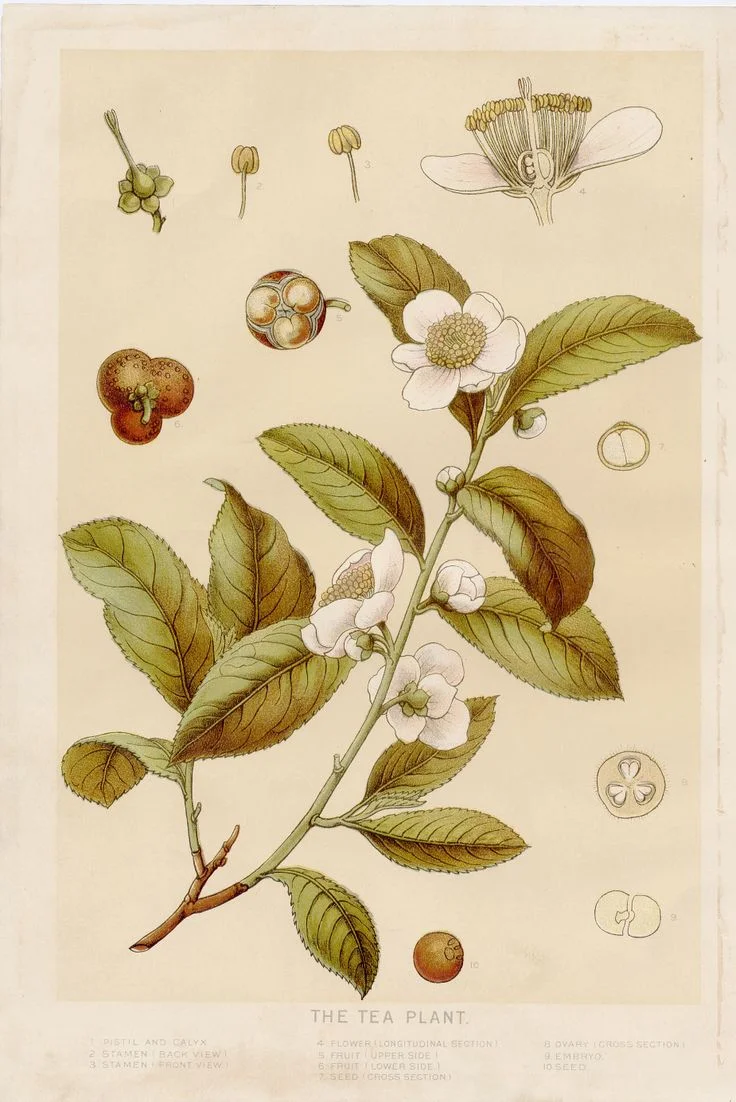The arrival of the Camellia in Europe and its influence
The history of camellia in Europe really began in England. Even if the climate was not, a priori, favorable. It was cultivated in greenhouses, at least in the beginning. The English prospected and brought back varied plants from their travels. Thus the first camellias arrived in England in the early 18th century. James Petiver, apothecary, described in 1702, a plant with a red flower named 'Thea Chinensis'. In fact, the English were trying to find the tea plant. If Cunningham, surgeon and botanist, brought back C.sinensis and C.fraterna , the propagation of these plants to make 'tea' did not give the desired result. It is also said that the British were abused and had been given ornamental shrubs despite of tea species. Undoubtedly, it was C.japonica, the botanical species (picture on the right). In 1739, the first camellia japonica were cultivated. But, it was a plant reserved to an elite, because of its rarety and cost.
The plant quickly spread through the royal and princely courts of Europe. George III planted one in Pillnitz, Germany, near Dresden. It still lives there, protected in winter by a huge greenhouse, given its impressive size (see left picture). It was also cultivated in Italy (Caserte), Netherlands and France. In these days C. japonica was the only camellia known in Europe. In the early 19th century, Henri Favre (Mayor of Nantes) discovered that the camellias could live very well out of greenhouses. The Brittany (west of France) climate is especially favorable. Many nurseries were created in Brittany and Anjou and new varieties were breed. Old varieties and more recent ones can be found in the 'Jardin des Plantes de Nantes'. It remains one of the reference gardens for camellia lovers through the diversity of cultivars that can be admired.
Edible Oil Nowadays
Southern European countries such as Italy and Spain have a wide range of climates, ranging from the warm mediterranean sunshine of Southern Spain and Sicily, to the colder, more maritime climate of Northern Spain and Northern Italy


